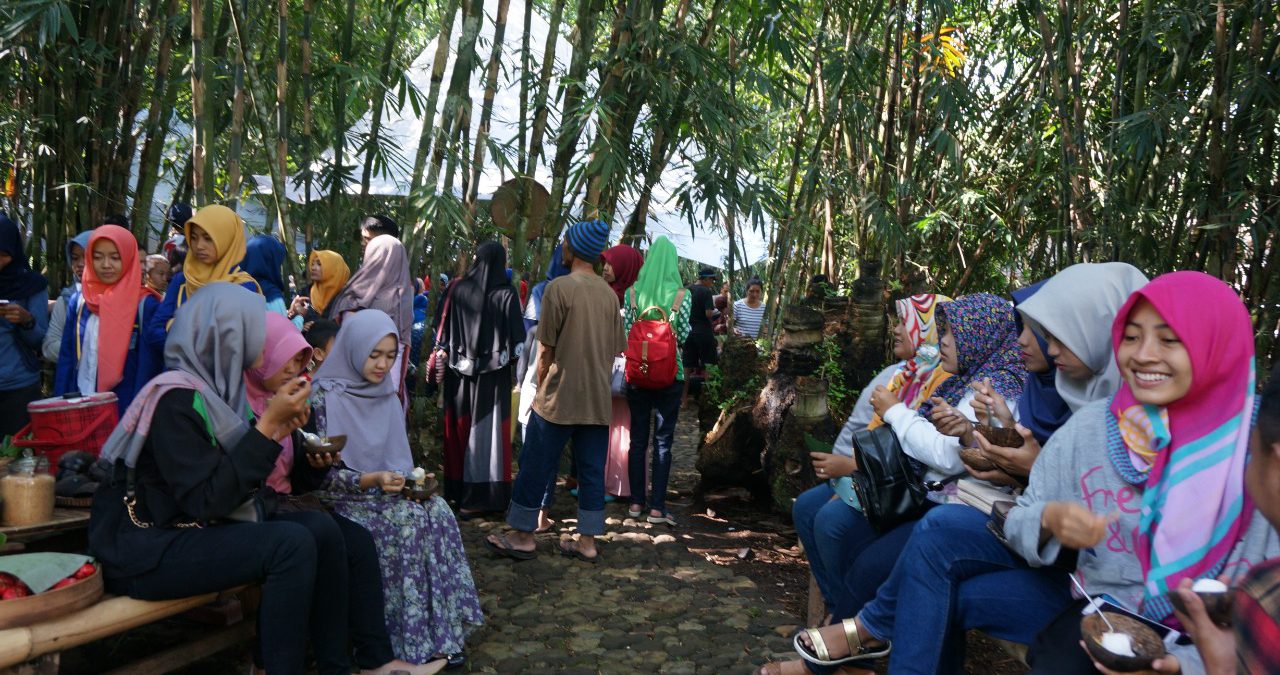
Keep up with our latest news and projects!

Throughout history, human civilisation has shifted not only in a forward linear motion but also vertically on a spiritual-material axis. When imbalances occur due to the dominance of the spiritual side or the material side, people are pushed to find a new balance. The Industrial Age has dragged life to the bottom of an abyss of materialism, resulting in the destruction of nature on a global scale and the emergence of inner emptiness. The old life, which is more balanced, becomes the inspiration for the future direction. The prototype of a new civilisation also begins to manifest itself when old values reappear in new forms. This situation should remind developing countries that are now competing to become industrial countries to return to the equilibrium that they have just left. The future is actually very close to them, but thus far they have seen it as the past that they want to leave behind.
Pasar Papringan, located in Ngadiprono hamlet in Temanggung, Indonesia, is one proof that the future of life actually exists in the traditions of rural communities. This pop-up market located in Papringan (Javanese for ‘bamboo garden’) is not only a unique, clean and beautiful market with a variety of local food, handicrafts and agricultural products. With its local-sustainable concept, Papringan Market also automatically becomes a plastic-free market. Locally sourced banana leaves and bamboo shopping baskets replace disposable plastic wrappers and bags. Industrial food additives are not permitted, and local residents are invited to use only natural ingredients and dyes. Here, the traceability of materials is a simple matter, because everything is produced locally. Almost all of the market’s rubbish is organic, and all of the reusable utensils are washed using lerak, a fruit-based cleaning agent.
Pasar Papringan was initiated by the Spedagi Movement, an NGO headquartered in Kandangan Village, Temanggung, Indonesia. Spedagi focuses on Village Revitalisation movements through creative approaches. Pasar Papringan started in January 2016 in Kelingan Hamlet, Caruban Village, Temanggung. This social and environmental experiment unexpectedly received a very good response; once Pasar Papringan was opened, it was almost never devoid of visitors, including many who travelled from outside of the district. This success has given rise to a new enthusiasm from the local residents for whom life was previously underdeveloped.
But this very quick process also raised new social problems. Disputes between community groups over the economic aspects of the market proved very difficult to resolve. Spedagi, as a companion institution, did not have the authority to solve problems like this. At the same time, the authorities, in this case the village government, didn’t want to be involved in these conflicts. In the end, in December 2016, Pasar Papringan had to be closed. This was a hard decision but it became an important lesson for the Spedagi team. Creativity, good intentions and hard work are not always enough to maintain activities in the village.
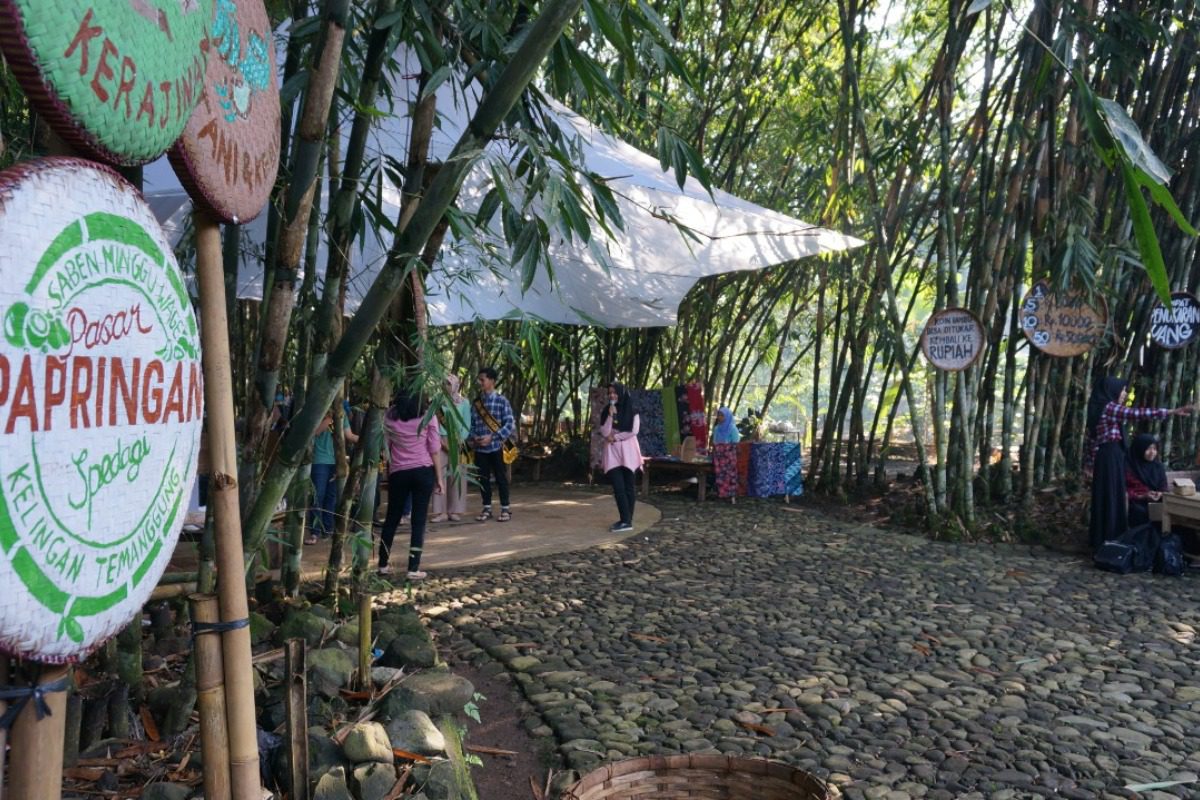 Market days at Pasar Papringan #1
Market days at Pasar Papringan #1
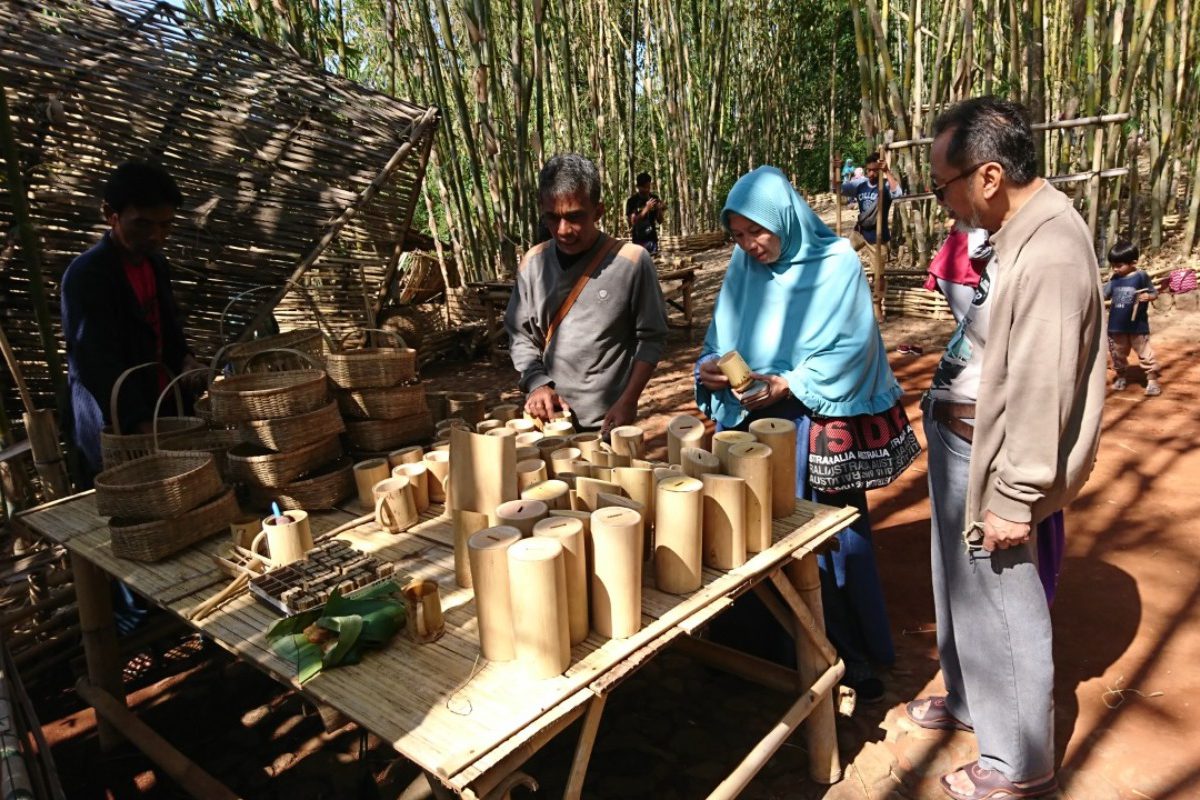 Market days at Pasar Papringan #2
Market days at Pasar Papringan #2
Luckily, Spedagi then met Imam Abdul Rofiq, a young man from Ngadiprono hamlet. Imam, the head of the local youth community, offered to establish Pasar Papringan on a lot near his residence. Although it was dirty and muddy, the area Imam suggested was wider than the previous one and had a beautiful landscape. Around November 2016, Spedagi decided to establish Pasar Papringan in this new place. Armed with bitter past experiences, the team conducted an evaluation and made a more careful planning. The implementation team, together with chairman Fransisca Callista and the local community, mapped the opportunities and problems in more detail, with a special focus on social aspects. This process helped Spedagi to understand the rhythm of people’s lives, but also how to build better communication with the residents. Imam’s role as a local leader became very important, as the bridge between Spedagi, local residents and the village government.
Because the owners of the Papringan lot were all family relations of Imam, the process of getting permission became easier. The team also proposed actions for the conservation of the bamboo gardens to the owners. Eventually, an agreement was reached and Spedagi was allowed to rent the land.
The biggest problem that the project faced was the initial lack of confidence from the local residents. They felt unsure that simple village products would appeal to visitors. Yudhi Setiawan from the Spedagi team trained the residents to better curate their local cuisine, in terms of ingredients, processes, portions, prices and appearance, while still using local materials. The same thing was done for farm products by other Spedagi teams.
This preparation phase lasted around four months, starting in January and officially opening in May 2017. The easiest part was the physical restructuring of the Pasar Papringan area. Based on a previously made landscape design, the team and the community cleaned and created empty spaces between the bamboo clusters for selling and other activities. Paving stones were added to the lot, using an old cobblestone technique (in Indonesian, trasah batu). In addition to preserving local natural landscapes, the Pasar Papringan project also helps to elevate this traditional technique, which is starting to disappear as village roads are turned into asphalt and concrete. The combination of beautiful, towering bamboo clusters and unique cobblestone patterns results in stunning organic spaces.
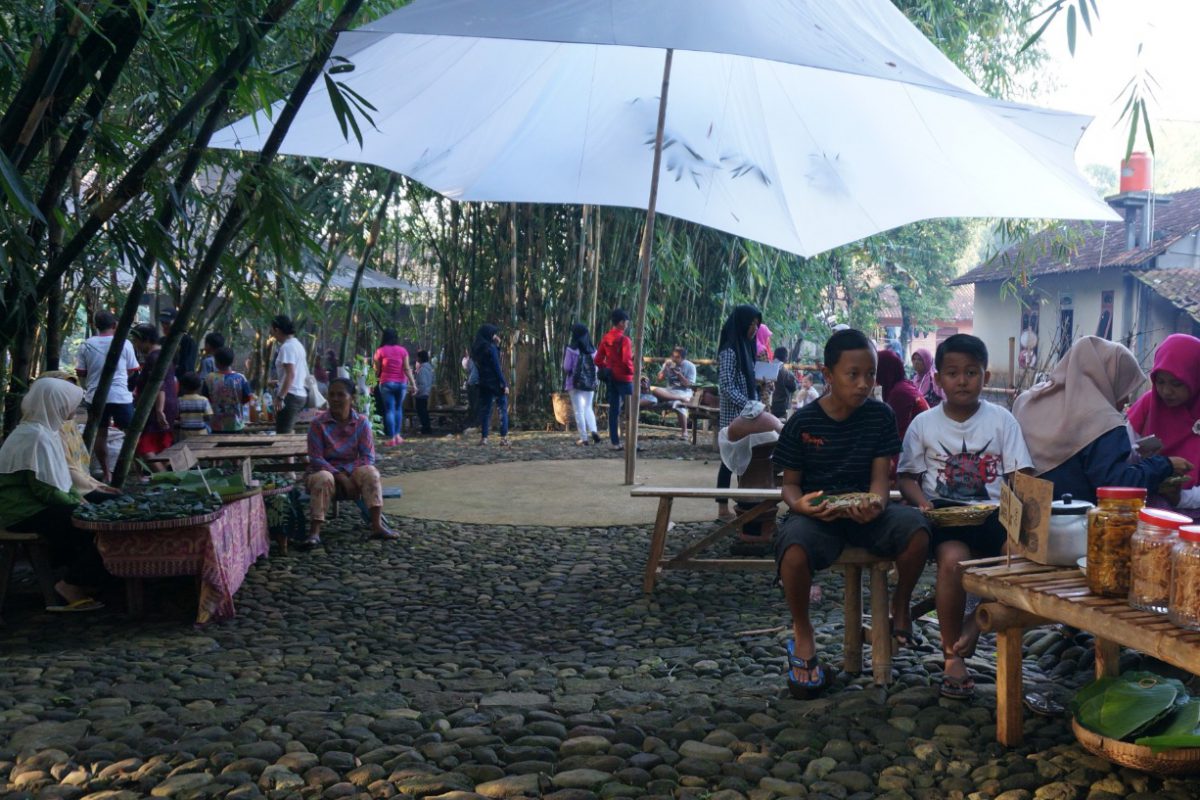
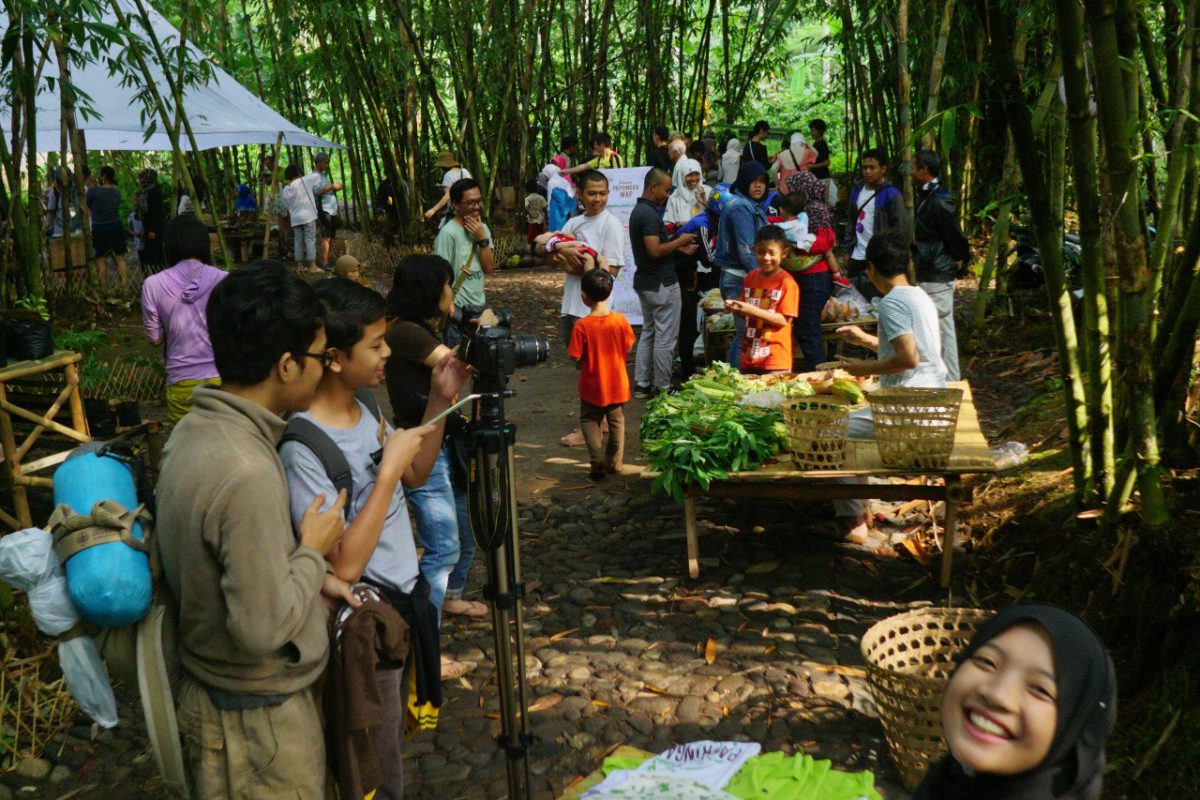
During special events, the space becomes vibrant with thousands of visitors. They come from far and wide to taste the village cuisine, to shop for village products and to linger and enjoy the beautiful atmosphere of the countryside. Thanks to the affordable prices of products, the market gathers people from all economic layers. Pasar Papringan also teaches its community about the local wealth that is stored in the village. The residents are able to witness for themselves how people from distant places and urban areas value their products, culture and way of life. This endorsement from urban society — which had been the idol society of rural communities — has helped to erode feelings of inferiority and foster self-confidence.
The organisation of each event at Pasar Papringan typically involves almost all 450 residents from the hamlet. They are involved as part of the management team, sales team, cleaning staff and parking attendants. The economic value of each event is relatively large for the Ngadiprono community. Though it would be possible to open more regularly, Pasar Papringan only opens on certain Sundays according to the Javanese calendar; twice every 35 days. Spedagi realises that in the concept of Village Revitalisation, it is more important to restore the lives of rural communities by starting from existing local, social, economic and cultural roots, rather than by replacing them with new activities.
Outside of the event schedule, the 3,500 m2 outer garden area of the market has become a new, much-needed public space for the local community. The Pasar Papringan area has also been used several times for different local, national and international events. Beyond these activities, Pasar Papringan has turned the hidden Ngadiprono hamlet into a place for young people to gather and learn about empowering localities.
Pasar Papringan, with its local / sustainable / self-sufficient concept, has not only transformed a muddy slum into an attractive place and provided various benefits for the local community, but has also made visible the idea that the future is really just the past reappearing in a new form. The old values that are still attached to the life of rural communities are in fact the same as the values of the future, which looks to locality, self-sufficiency and sustainability as the main pillars of life.
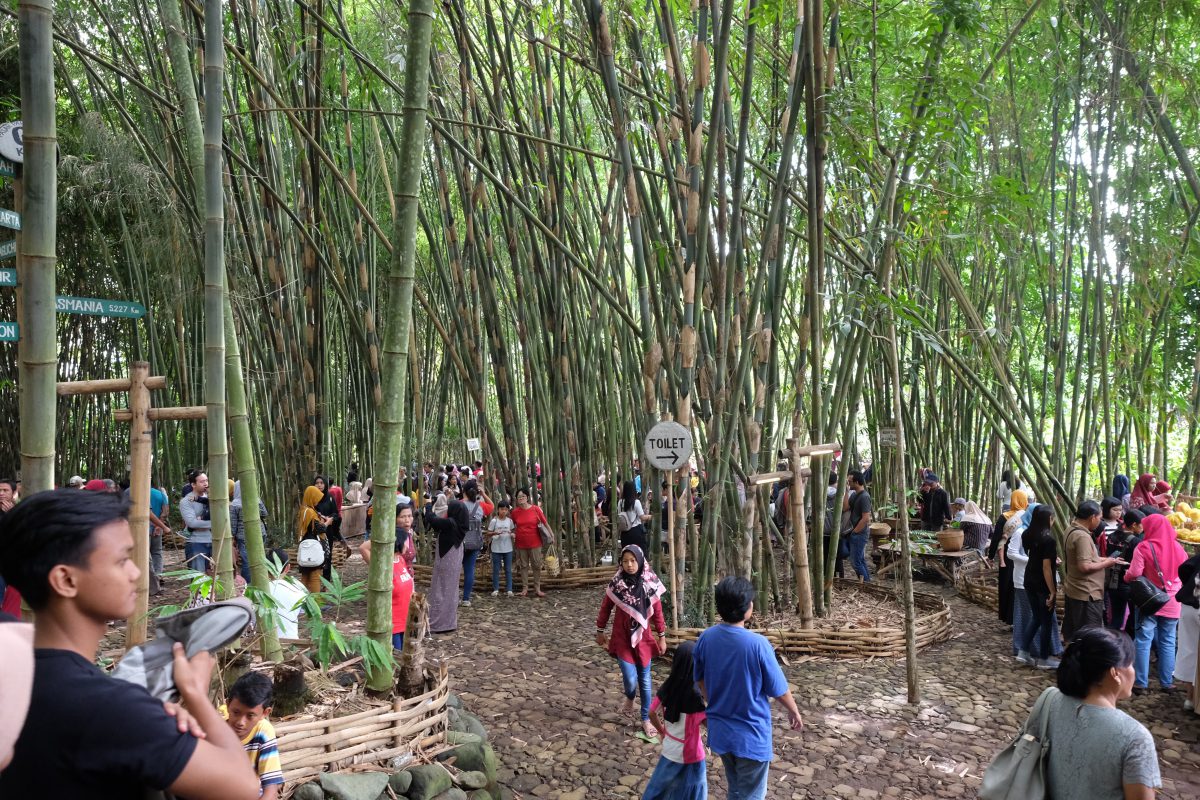 by Yanty Hardi Saputra
by Yanty Hardi Saputra